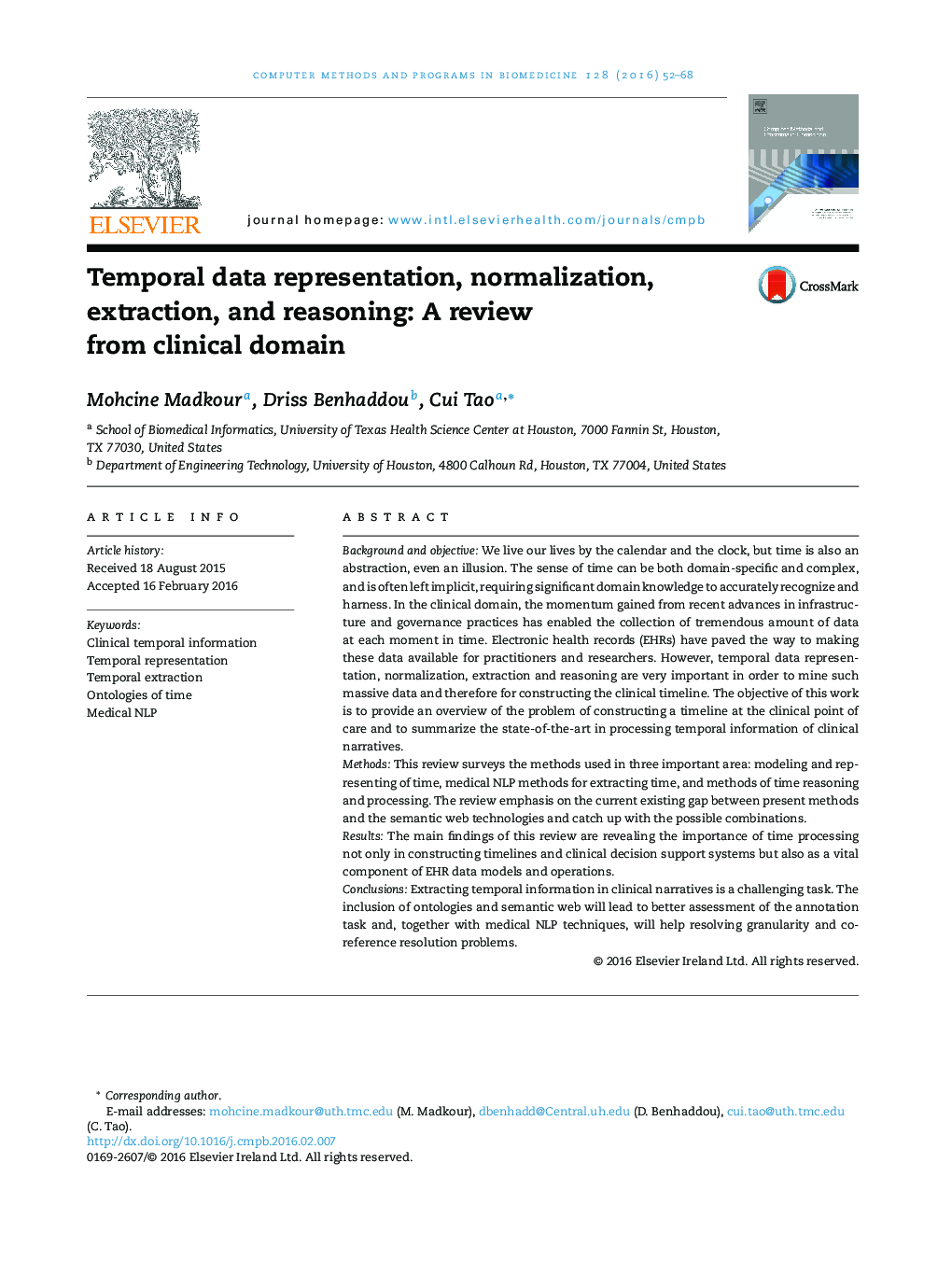| کد مقاله | کد نشریه | سال انتشار | مقاله انگلیسی | نسخه تمام متن |
|---|---|---|---|---|
| 469105 | 698288 | 2016 | 17 صفحه PDF | دانلود رایگان |
• Multifaceted aspects in time and time-oriented concepts.
• Comparison of clinical data models in handling time.
• Ontologies of representation and reasoning about time in the clinical domain.
• Constructing the timelines for the medical histories of patients.
• Temporal concept coreference resolution problem.
Background and objectiveWe live our lives by the calendar and the clock, but time is also an abstraction, even an illusion. The sense of time can be both domain-specific and complex, and is often left implicit, requiring significant domain knowledge to accurately recognize and harness. In the clinical domain, the momentum gained from recent advances in infrastructure and governance practices has enabled the collection of tremendous amount of data at each moment in time. Electronic health records (EHRs) have paved the way to making these data available for practitioners and researchers. However, temporal data representation, normalization, extraction and reasoning are very important in order to mine such massive data and therefore for constructing the clinical timeline. The objective of this work is to provide an overview of the problem of constructing a timeline at the clinical point of care and to summarize the state-of-the-art in processing temporal information of clinical narratives.MethodsThis review surveys the methods used in three important area: modeling and representing of time, medical NLP methods for extracting time, and methods of time reasoning and processing. The review emphasis on the current existing gap between present methods and the semantic web technologies and catch up with the possible combinations.ResultsThe main findings of this review are revealing the importance of time processing not only in constructing timelines and clinical decision support systems but also as a vital component of EHR data models and operations.ConclusionsExtracting temporal information in clinical narratives is a challenging task. The inclusion of ontologies and semantic web will lead to better assessment of the annotation task and, together with medical NLP techniques, will help resolving granularity and co-reference resolution problems.
Journal: Computer Methods and Programs in Biomedicine - Volume 128, May 2016, Pages 52–68
